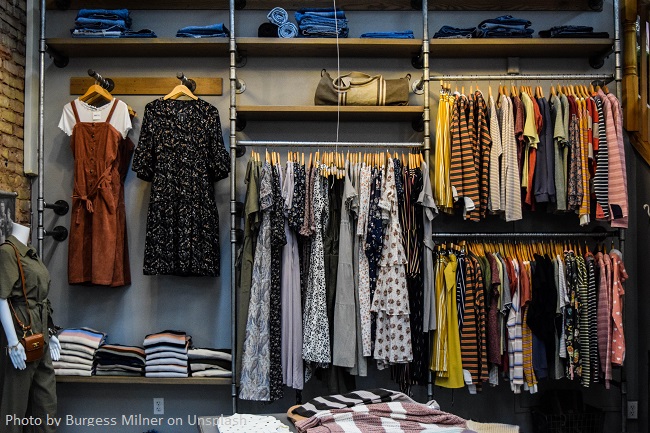How are IP rights positioned in a fashion brand’s strategy: What challenges does the future present?
The fashion industry is undeniably a constantly growing market that stands out for its peculiarities in terms of its fast-paced operation mechanisms, ephemeral trends and collections and its unique business structure. All these phenomena lead to a need for specialized and precise legal assistance, where Intellectual Property Law plays an extremely important role.
This is an industry that thrives out of creativity, inspiration, and, sometimes, copy. Thus, fashion brands and designers must incorporate a strong net of intellectual property rights in their business strategy to protect their creations, avoiding infringements and litigation.
Some might argue[1] that the cyclical copying (or inspiration) mechanism of high-end designers from each other or fast-fashion and lower-rated brands copying (or taking inspiration) from those is, apparently, beneficial, or just necessary for the good (and profitable) function and growing innovation on the fashion industry. Thus, fashion brands, theoretically, succeed with low enforcement IP systems. This idea is based on the following occurrence: when brands are targeted with copying, they are forced to respond with new ideas, accelerating the creative process and innovation. Additionally, some copies might even enhance the value of the original product, trending it, and increasing sales.
However, there might be increasingly manifest problems in the fashion industry that are not covered by that theory. First, should Fashion still be seen as a fast-paced economy, with short-lived collections and garments whose only goal is to monetize and produce more and more? Or, instead, should we start looking at the Fashion Industry and clothing production from another perspective? Studies[2] show that textile production plays a major role in the industry’s carbon footprint and contributes massively to the environment’s pollution, not to mention the inhumane conditions to which workers are subjected to deliver fast-fashion collections on record times and with unbeatable prices, therefore promoting a consumerism culture with unsustainable and unethical practices. Secondly, whilst big renowned designers might profit from the “copying culture”, there are emerging small designers and entrepreneurs who do not have the financial capacity for litigation against powerful entities in the Fast Fashion sector and who see the fruits of their labour and investment being targeted for copying and infringement, which is damaging or even fatal for those who want to prosper in the industry with sustainable and fair-trade practices.
To protect the latter, intellectual property strategies need to be outlined by enterprises and brands to protect fashion creations, not only with private purposes within the company but equally to shift the direction where Fashion is heading and focus on long-lasting collections and pieces, made with quality and sustainable materials and through ethical practices, where the creative process is longer.
Some IP rights that might confer successful protection to certain fashion creations are:
As for Trademarks, there are some successful cases in intending to protect the external configuration of the product itself as a shape, position and sometimes even colour, trademark. See, for example, the famous Birkin Bag from Hermès (EUTM nº 004467247)[3] registered as a shape trademark or the notorious legal dispute Louboutin went through to be able to register the red shoe sole as a mark (EUTM nº 8845539)[4]. Managing to register as a shape trademark the single form of a product as a bag or a shoe is a hard task and a long process since we are asking the Offices to establish a monopoly (indefinitely, due to trademarks indefinite renovations) over that shape, or colour and this needs to be wisely balanced in such a creative industry as fashion.
For this to be possible, the applicant must utterly prove that the commercial origin of the product is traceable solely through the shape, thus, that specific shape has a sufficiently distinctive character. This is not an easy task and most of the successful cases take a long time to conquer the registry since the product needs to be marketed for many years and acknowledged by the public until it acquires that distinctive capacity. The recent case of Dior’s[5] failed attempt to register the shape of the famous “Saddle Bag” should be considered here, even such an iconic piece could not get a hold of a 3D mark registration, for lack of distinctive character and not “divergent from the norm or customs of the sector”.
When it comes to Designs, these are, by default, the “go-to’s” when it comes to protecting fashion creations, since they sought to protect products’ external appearance. The “catch” comes when assessing the need (as the financial capability and the context) for registration since there are Unregistered Community Designs for European Designs (and a similar figure exists in United Kingdom Law). This protection arises automatically and lasts for three years (from the disclosure date) so would be suitable for items that the designer does not predict to have long durability or simply cannot cover the registration costs. Therefore, creators should invest in design registration when the pieces are predictable to have high durability and enduring notoriety, thus, in need of longer protection since Registered Community Designs protection can go up to 25 years. It is important to mention that unregistered design enforcement is harder to obtain than registered ones, so these are “unsteady” until the moment of litigation.
Naturally, that durability assessment is not something a designer can do in the early stages of a product, much less before its launch to the public. EU Design law allows the designer to test the products embodying the design in the marketplace before deciding whether the protection resulting from a registered Community design is desirable (Recital (20) of COUNCIL REGULATION (EC) No 6/2002 of 12 December 2001 on Community designs), so, the designer has a period of 12 months from the disclosure to register the design.
As for Copyright, being an automatic right (unregistered) leaves it unclear for certain creations to be under its scope of protection, particularly in closed list systems. However, recent CJEU decisions have been opening ways for fashion creations to be considered “works” under copyright law, but there is a long way to go.
Therefore, fashion creations’ protection under Intellectual Property Rights requires adequate and detailed approaches and is not an easy task, with several questions yet to be solved. However, it is an issue to be carefully taken into consideration while assessing commercial plans inside a fashion business, since those rights aren’t just legal protections but real economic assets.
This leaves us to ask, where is Intellectual Property in Fashion heading and what challenges does the future present?
As the digital revolution takes place before our eyes, and Metaverse is becoming a serious commercial reality where business transactions are made (and its market size is only expected to grow[6]), a large group of consumers is shifting their demand for digital assets as they place themselves in the Metaverse in the form of their avatars. People intend to transfer their personalities and behaviour, dressing those characters with real branded clothes and owning luxury just as in the physical universe, as if making a statement in an under-construction society, where everyone is rushing to be the first trendsetter.
For this reason, brands are looking to position themselves, urgently, in the Metaverse, not only to profit from this market and sell their own digital products but also to make their presence noticed and prevent IP infringements from digital entities attempting to freeride on the brand’s notoriety and image.
If the Metaverse is becoming a digital reflex of the physical world, why shouldn’t creations’ protection be given the same importance in both?
The strategy for this positioning is through the registration of trademarks for virtual clothes and virtual clothing stores. According to the Law Firm Mathys & Aquire[7], 2,146 of those registrations have been made last year. See one of Nike’s examples, EUTM nº 018586664[8].
This virtual market growth is, inevitably, increasing the number of lawsuits over NFTs and trademark infringement where products are non-material, and a new and unknown area of law is left to be regulated. A case that is causing quite the attention is the recent dispute between Hermès and the digital artist Mason Rothschild, who created some fuss in the online sphere by selling NFTs that resembled (pretty much) the famous Birkin Bags sold by Hermès[9]. The notorious brand sued the digital artist for trademark infringement, who replied by saying he was not selling bags but creating art as his own interpretation of the world, not falling within the scope of trademark infringement. Should this be a trademark infringement?
With this question, many others remain unanswered while we surf in this new digital era, where fashion’s presence is expected to increase massively, and adapt our industries, economies, and regulations to it.
 About the blogpost author:
About the blogpost author:
Leonor Ruano Silveira is a Master’s student, currently pursuing an Intellectual Property Law LLM at Queen Mary University of London. She obtained her bachelor’s degree in Law from the University of Lisbon Law School. Following her keen interest in fashion law, Leonor has completed a Fashion Law Course at Milano Fashion Institute. During her internship at Simões, Garcia, Corte-Real & Associados, IP Firm in Lisbon/Portugal, she gained valuable experience in the field of Intellectual Property.
__________________________________
[1] Raustiala, Kal and Springman, Christopher, The Piracy Paradox: Innovation and Intellectual Property in Fashion Design. https://papers.ssrn.com/sol3/papers.cfm?abstract_id=878401
[2] https://www.europarl.europa.eu/news/en/headlines/society/20201208STO93327/the-impact-of-textile-production-and-waste-on-the-environment-infographic
[3] https://euipo.europa.eu/eSearch/#details/trademarks/004467247
[4] https://euipo.europa.eu/eSearch/#details/trademarks/008845539. See under the Decisions tab.
[5] https://euipo.europa.eu/eSearchCLW/#basic/*///number/R0039%2F2021-2
[6] https://www.globaldata.com/store/report/metaverse-market-analysis/
[7] https://www.cityam.com/meta-madness-virtual-clothing-trade-marks-surge-as-brands-look-to-monetise-on-nft-potential/
[8] https://euipo.europa.eu/eSearch/#details/trademarks/018586664
[9] More on: https://www.elle.com/uk/fashion/a38536774/birkin-bag-nft/



